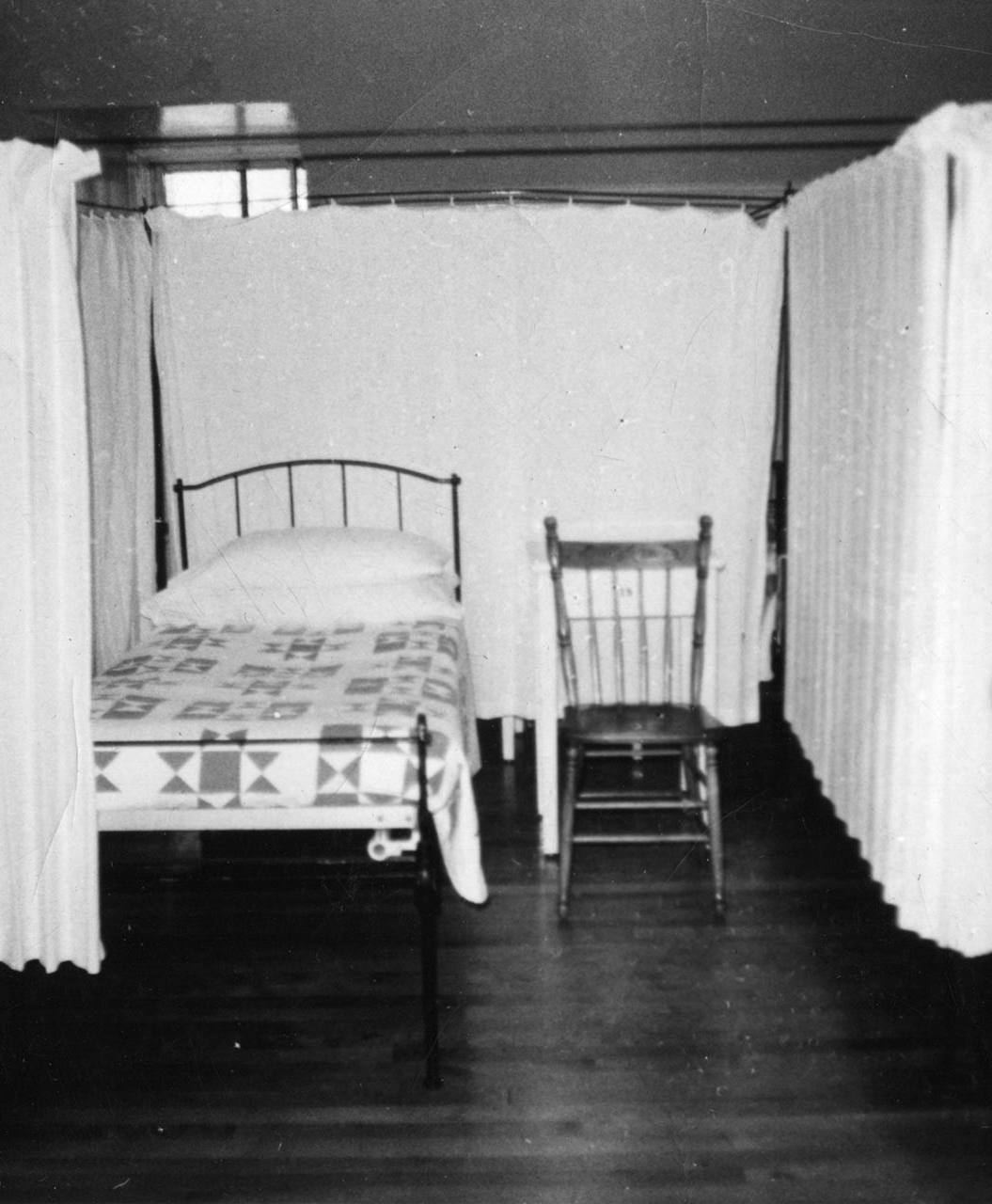DORMITORIES
The upper floors of the Mother House’s long corridors were home to nuns, orphaned children and transient boarders. These various resident communities, in keeping with hospitals of the period, were organized into large dormitory rooms according to sex, status and ailment.
Until recent decades, the Grey Nuns slept in large, austere rooms partitioned only by curtains – a reflection of their egalitarian philosophy. Orphans in the Saint-Mathieu wing enjoyed their own beds, a relative privilege for children in nineteenth- and early twentieth-century Montreal. More akin to present-day retirement homes, apartments in the pensioners’ corridor were furnished for a fee that helped subsidize care of the poor.
 ASGM L082_9Y9D Maison mère, Dortoir
Sainte-Marthe, Cellule, 1968.
ASGM L082_9Y9D Maison mère, Dortoir
Sainte-Marthe, Cellule, 1968.
“During that period, we had common dormitories. You know, small cells with four cotton curtains, a bed, a chair and a little desk. It was sober, very sober.”
Sister Louiselle Ferland
Many of these spaces have been preserved as dorm rooms for Concordia’s student population. The Grey Nuns Building began accepting student residents into its west wing in 2007, and expanded its capacity across the building over the following years. Today, the converted single and double rooms hold some 600 beds. All rooms have high-speed internet, modern furnishings – including sinks and mini-fridges – and ample wall space for personal decorations. These dorms are highly sought-after places for students to call home as the Grey Nuns once did.
Concordia residents reflect on living in the Mother House